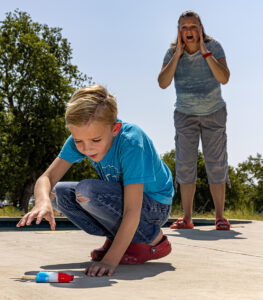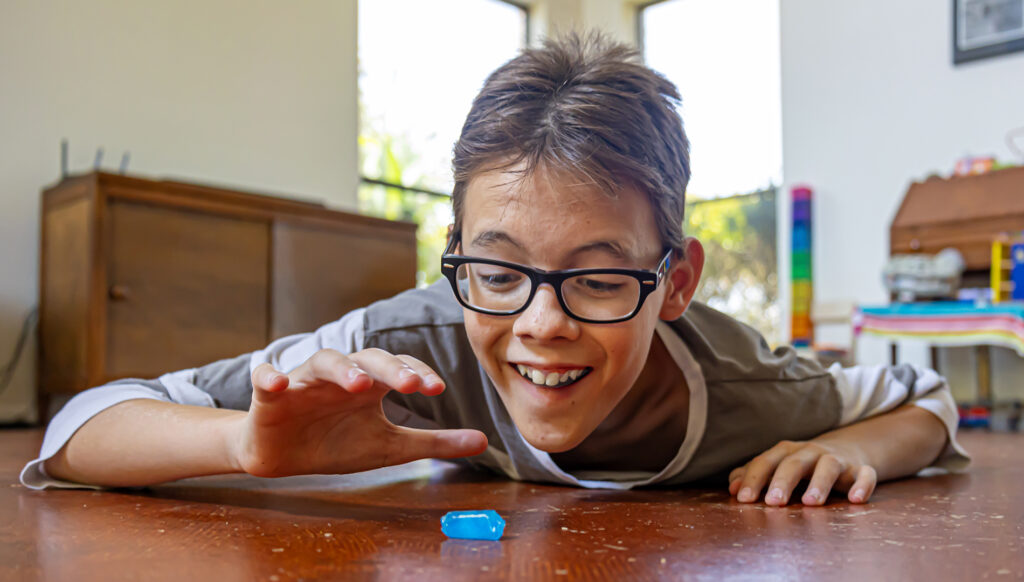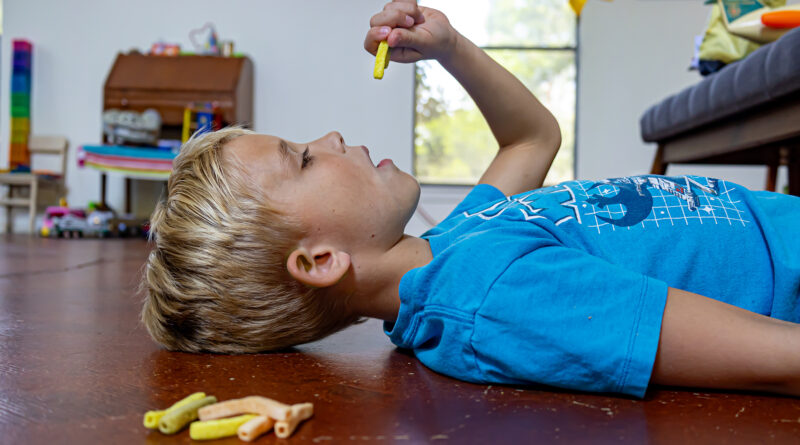Don’t Eat That!
We all know the 5-second rule about eating food off the floor, but what do the experts say?

By DAVID STONE | Photos by SKEEBO
If the COVID-19 pandemic taught us anything, it’s the importance of avoiding germs at all costs, even if it means missing out on that delicious M&M you dropped on the floor.
The temptation for that melt-in-your-mouth-not in-your-hands goodness is strong, but is it worth taking a risk by snagging it off the ground?
The situation
I was taking a walk the other day, and at one point I was behind a mom and her boy. He was eating M&M’s and dropped one on the sidewalk. He immediately bent down and grabbed it, but his mom popped it out of his hand.
“Don’t eat that, it’s dirty,” she said.
The kid dropped the M&M and they continued their walk.
No, I didn’t pick it up — although it was a coveted yellow M&M. Instead, the scene got me wondering: Just how dirty was that M&M and would it have been safe to eat?
What would you do?
A whopping 72% of Temple-area residents responding to an informal survey said they would have eaten the M&M, but 28% said they wouldn’t eat food off the floor no matter how fast it could be retrieved.
But interestingly enough, those who would have eaten the candy varied on the length of time it would take before becoming contaminated.
While 1% would have eaten the M&M regardless of how long it stayed on the ground, 61% would have picked up and immediately consumed the M&M, 4% said they would eat the fallen M&M if it stayed on the ground no more than 5 seconds, and another 6% would give the candy up to 30 seconds of ground time and still enjoy the found snack.
So, who’s right? We will get to that.
We all know ‘The Rule’
We know it as the 5-second rule, but it does come in variations. The most common cousin is the 3-second rule, but in my house growing up, we called it the 30-second rule, which was probably just a way of self-justification to eat those spilled M&M’s or Pringles.
Most of us know there are risks involved from eating off the floor, but common thought is that organisms can’t invade the food item in less than 3 or 5 seconds. Right?
Let’s ask an expert
Dr. Matt Taylor, a Texas A&M University professor who specializes in food safety, says the risk far outweighs the reward.
“Multiple researchers have investigated this in a scientific manner, notably researchers at Clemson and Rutgers universities,” Taylor said. “The data gathered by these groups indicates that the 5-second rule is not a safe process to live by to escape the risk of contamination by something that could make you sick.”
“However, some researchers found that some types of foods are more risky than others,” he said. “If you drop a piece of food on a hard surface such as concrete or a tile floor, it can be transferred much quicker and efficiently than if you dropped the food on carpet. The type of floor can make a slight difference in the time it takes for that food to become contaminated. Still, it’s not something we should live by.”
According to Taylor, researchers have indicated that food with a lot of moisture such as fruits and meats allow microorganisms to transfer far more efficiently than foods with less moisture such as hard candy, nuts and dried fruits.
“Even so, all food on the floor can be contaminated with bacteria such as salmonella or E. coli in very few seconds,” Taylor said.
“Salmonella and other bacteria do not have awareness,” he added. “They respond to environmental cues sent their way. They really aren’t out to get you, they are just trying to survive.”
In other words, microorganisms like M&M’s, too.

Bacteria isn’t the only problem
Taylor said bacteria and other microorganisms aren’t the only dangers lurking on the floor.
“Outdoors, we have no idea of what is on a sidewalk,” he said. “People walk on sidewalks and parking lots wearing shoes that could be contaminated.”
Plus, traces of bird and rat poop, germs from coughing pedestrians and remnants of rotting food also could be present. Surfaces can also be contaminated with pesticides, fertilizers and insecticides.
“Indoors, floors and carpets can contain films left by bug sprays, cleaning agents, bleach…a lot of bad stuff can be on your floors even though they look clean,” Taylor said. “You have to be careful with your kids and pets — a dog or cat shouldn’t eat off the floor for the same reasons.”
Some people could get very sick
Taylor also said that eating food off the ground — while potentially harmful to everyone — is a bigger gamble for those with compromised immune systems.
“A person with a compromised immune system or going through medical treatments could become very sick by eating contaminated foods,” he said. “A piece of candy, for instance, that has been on the ground quickly becomes covered in germs. There are definite risks to consuming organisms — it can make you sick.”
And Dr. Taylor says…
“Who is grabbing the food? How strong is their immune system? How long has it been sitting on the ground? What is the level of moisture in the food? What chemicals or microorganisms are on the ground? No two situations are the same, but one thing is clear: Microorganisms will get on food within 3 seconds or even faster. To reduce the risk of illness, pick it up and throw it away,” he said. “Don’t eat it. Adopting a ‘throw-it-away’ rule teaches kids that eating food off the floor is not something we do. It’s not safe, and it is not accepted.”




